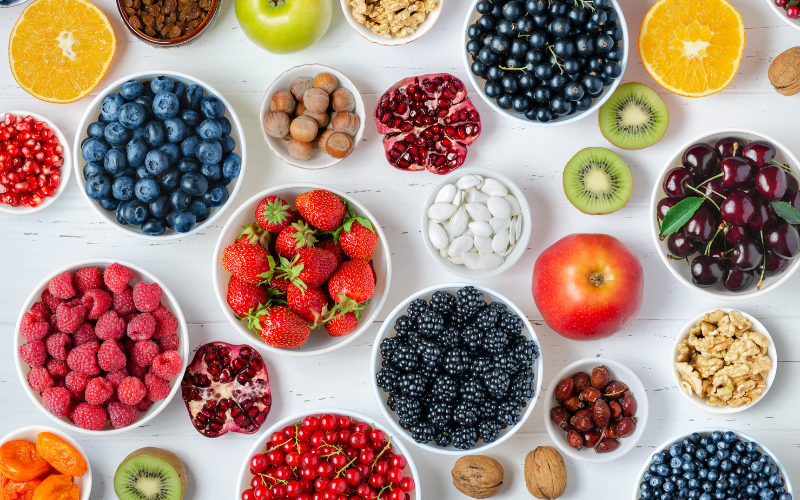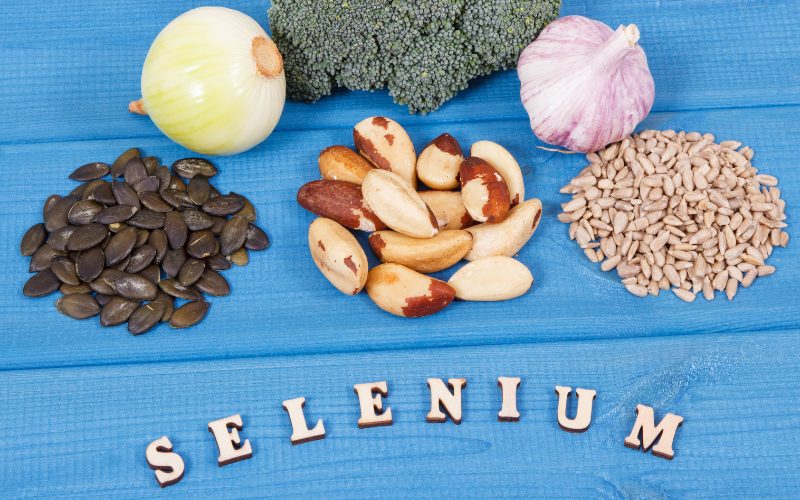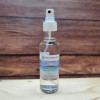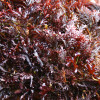In the vast field of nutrition, certain elements, although present in minute quantities, exert a monumental influence on human health. These are the Trace elements, true conductors of the biological processes that keep our body in perfect balance. Yet, In the era of industrialized agriculture, the question of their sufficient contribution to our daily diet is becoming increasingly pressing.
This report explores the fundamental role of trace elements, examines the reasons for their depletion in our modern diets, and presents natural and scientifically-based solutions to address this vital deficit, particularly through the treasures the ocean offers us.
Trace elements: miniature actors with macro functions
Trace elements are essential minerals which the body needs in very small quantities, often on the order of microgram or of the milligram per day. Despite their modest presence, their importance is paramount for maintaining health and preventing diseases.1 They are distinguished from macro-elementslike the Calcium or the magnesium) by their lower concentrations in living tissues, but their role is nonetheless fundamental.3
Definition and classification: trace elements vs. macro-elements
Trace elements, or trace minerals, are mineral salts essential for the proper functioning of the body. Unlike macro-elements, which are needed in larger quantities, trace elements are required in minimal doses. Their absence, even partial, can lead to nutritional deficiencies with significant consequences, while an excess can also prove harmful and toxic.2 This duality highlights the need for a precise balance in their contribution. Each trace element has a distinct and specific function in the human body.4
Their role as enzymatic catalysts: How they activate the body's vital reactions
The most remarkable function of trace elements is their role as enzymatic catalysts. They are the "activators" of thousands of essential biochemical reactions that continuously occur in our body.1 Without them, many enzymes – these proteins that accelerate vital processes – would not be able to function properly. For example, certain metal ions such as iron and copper are directly involved in the redox reactions of energy metabolism, a fundamental process for cellular energy production.3
Trace elements not only activate the general metabolism; they also participate in more specific cellular functions., like the regulation of replication and the Cellular differentiation.5 This means that they are directly involved in growth, tissue repair, and cellular renewal. Their role is essential for the structural stability of cells, and their deficiency can trigger alternative pathways, leading to various disorders.4 They are, in essence, the sparks that allow our biological machinery to function harmoniously.
The Delicate Balance: Why Sufficient Intake is Crucial and the Dangers of Excess
The balance of trace elements in the body is of utmost importance. Their presence in too low (deficiency) or too high (excess) quantities can lead to significant health problems., ranging from neurological disorders and cardiovascular to a compromised immune response.4 The margin between an optimal intake and a toxic intake varies considerably from one trace element to another.3 For example, a zinc deficiency can weaken the digestive function and the immune defenses, while an excess can also pose problems.4
The complexity lies in the fact that each trace element has specific physiological needs. An excessive intake of certain elements, such as copper, can become a poison, causing symptoms ranging from digestive disorders to liver lesions Serious.7 Similarly, excessive zinc supplementation can induce a copper deficiency, illustrating the interdependence of these micronutrients.8 Maintaining correct levels is therefore essential to prevent serious bodily defects, or even death.4 This complexity highlights the value of balanced natural sources, which offer a synergy of nutrients in physiological proportions, minimizing the risks associated with isolated intakes.

The impoverishment of our diet: A consequence of modern agriculture
Despite the vital importance of trace elements, our modern diet is facing a major challenge: the gradual depletion of nutrient content in our food. This phenomenon is the result of decades of intensive agricultural practices that have depleted the soil and altered the nutritional composition of crops.
Soil Depletion: Causes and Impact on Mineral Content
Soil health is the foundation of the nutritional quality of our food. However, soils are living and complex environments that form over thousands of years. (It takes 200 years, or even several millennia, to form just 1 cm of soil.).9 Unfortunately, human activities have led to a rapid and sometimes irreversible degradation of these precious resources.
Approximately 40% of the planet's soils are currently degraded, affecting half of the world's population.10 The main causes of this degradation are multiple:
- Erosion: Accentuated by practices such as crop rows in the direction of the slope, overgrazing, or deforestation, erosion carries away the nutrient-rich topsoil.9 Soil erosion rates in arable lands are 100 to 1000 times higher than natural erosion rates.10
- Intensive plowing and monoculture: These methods disrupt the soil structure, reduce organic matter and biodiversity, and decrease the availability of nutrients for plants.11
- The use of chemical fertilizers and pesticides: These inputs alter the natural balance of the soil, reducing its ability to provide essential nutrients to plants and contaminating the water and air.9
This "ecological debt" of the soil has direct consequences on the nutritional quality of crops. Healthy soil is essential for producing nutrient-rich plants, as soil ecosystems provide plants with the elements they need to grow and produce nutritious food.11 Soil degradation reduces the availability of these nutrients, which directly impacts the overall nutritional value of our food.
The industrialization of agriculture: high-yield varieties, pesticides, and chemical fertilizers, and their effects on the nutritional quality of crops
The advent of theAgriculture Industrial methods have been introduced to optimize crop yields, often at the expense of their nutritional quality.11 This compromise between quantity and quality is a major characteristic of modern food production.
- Plant hybridization: The crossbreeding of different plant varieties to increase yield, resistance to pests, or shelf life can lead to a reduction in the content of essential vitamins, minerals, and antioxidants.12 The genetic diversity of plants is decreasing, which can result in a decline in nutrient production.
- Monoculture: The practice of cultivating a single species over large areas depletes the soil of specific nutrients and makes crops more vulnerable to diseases and pests. This then requires increased use of chemical fertilizers and pesticides, which in turn contaminate the soil and water, further affecting the nutritional value of the crops.12
- The intensive use of chemicals: Pesticides and synthetic fertilizers, while increasing short-term yields, disrupt the natural balance of the soil and the ability of plants to absorb nutrients.11 This leads to less nutritious crops, directly affecting the quality of food consumed by humans and animals.11
This approach, focused on productivity, creates a vicious cycle where depleted soils require more chemical inputs, which in turn further degrade the nutritional quality of food.
Scientific evidence of decline: Studies showing the decrease of trace elements in fruits and vegetables over the last 50 to 100 years
Several studies based on historical food composition tables have highlighted an apparent decline in nutrient content in foods over the past 50 to 100 years, a phenomenon largely attributed to soil degradation and industrial agricultural practices.13
A study conducted by Jack In 1998, examining the data from the USDA ARS Nutrient Data Laboratory, revealed a significant decrease in minerals and vitamins in many foods between 1975 and 1997. For example, the average levels of calcium in 12 fresh vegetables have decreased by 27%, iron by 37%, vitamin A by 21%, and vitamin C by 30%.14
Similarly, a study ofAnne-Marie Mayer In 1997, comparing British data over a 50-year period, noted significant reductions in mineral levels in fruits and vegetables.18 The most significant decreases were observed for sodium (52%), iron (50%), copper (49%), and magnesium (10%) between 1940 and 2019.18 The copper in vegetables has particularly suffered, decreasing by more than four-fifths of its initial content.19 These alarming figures, observed in different countries and over long periods, confirm that the trace element content of our diet has indeed decreased, making it more difficult to achieve the necessary intake through the consumption of conventional foods alone.

Essential trace elements: Specific roles and signs of deficiency
Each trace element plays a unique and irreplaceable role in maintaining our health. Understanding their specific functions and deficiency signals is crucial for identifying the body's needs.
Iron (Fe)
The Iron is an essential trace element, primarily recognized for its role in the hemoglobin production, the protein in red blood cells responsible for the transport of oxygen from lungs to all the tissues of the body.21 Beyond this vital function, iron is crucial for the energy production, the optimal functioning of the immune system and the maintenance of cognitive function.21
Iron deficiency is the most widespread nutritional disorder worldwide, being the cause of nearly half of all anemia cases.23 His symptoms often develop insidiously and may include a fatigue and persistent exhaustion, shortness of breath, headaches, dizziness, pale skin, and cold extremities.22 At more advanced stages, it can lead to brittle nails, dry hair and skin, and an increased vulnerability to infections.6 In pregnant women, a severe deficiency is associated with an increased risk of complications, such as low birth weight or perinatal mortality.26
Certain groups are particularly at risk of iron deficiency: people following a vegetarian or vegan diet (due to the lower bioavailability of non-heme iron in plant sources), pregnant or breastfeeding women whose needs are significantly increased, women with heavy menstruation, children and young people during periods of rapid growth, as well as individuals suffering from gastrointestinal disorders such as Crohn's disease or celiac disease, which impair absorption.25 Endurance athletes are also affected due to frequent small gastrointestinal blood losses.25
Zinc (Zn)
The zinc is a versatile trace element, essential for health and present in all the cells of the body.6 He acts as a "guardian" of the immune function, exerting a major influence on the body's defense system.6 It is an essential cofactor for many enzymes, playing a crucial role in cellular metabolism, DNA synthesis, and protein synthesis.8 His functions extend to the wound healing, the Growth and development of children and the fetus, the maintenance of quality of the skin, of the hair and nails, as well as the sense of sight, taste, and smell.6 Moreover, it has an essential antioxidant activity, protecting cells against aging.8
A zinc deficiency can manifest through a multitude of symptoms affecting various parts of the body. Common signs include hair loss. hair, brittle nails, slow wound healing, night blindness, weakened sense of smell, persistent fatigue, depressive mood, increased susceptibility to infections (frequent colds, diarrhea), a weight loss severe, muscle cramps, and erectile dysfunction.6 In children, a deficiency can lead to growth delays and skin problems such asacne or psoriasis.8
Certain populations are at a higher risk of zinc deficiency. People following a purely plant-based diet have 50% higher needs due to the presence of anti-nutrients (such as phytates) in plant foods that reduce zinc absorption.6 The Stress chronic, the diabetes (which increases urinary excretion of zinc), and malabsorption syndromes (such as celiac disease) are also risk factors.6 It is important to note that a zinc overdose, although rare, can lead to a copper deficiency, highlighting the interdependence of these two trace elements.8
Copper (Cu)
The Copper is an essential trace element for the harmonious functioning of the body, although often overlooked.7 It is vital for the nervous system, theimmunity and the red blood cell development.28 Copper participates in numerous metabolic reactions as a cofactor for enzymes called cuproenzymes.7 Its benefits extend to skin health by increasing collagen and elastin production, to healing, and to cardiovascular health by reducing the risk ofatherosclerosis and positively influencing the rates of cholesterol.7 It also contributes to the formation of strong bones and could play a role in reducing theanxiety and depression.7
A copper deficiency can develop slowly, making its symptoms difficult to identify at first. Common signs include fatigue, pale skin, frequent infections, difficulty concentrating, and bone fragility.28 More severe symptoms may manifest as numbness or tingling in the extremities, coordination and balance problems, vision disturbances, a muscle weakness, and anemia that does not respond to iron supplements.28 The causes of deficiency can include insufficient dietary intake, excessive zinc supplementation (which interferes with copper absorption), digestive surgeries (such as gastric bypass), or malabsorption disorders.28
The balance of copper is particularly delicate, as an excess can also be toxic. Ingesting one gram of copper can cause severe, even fatal, poisoning.7 The symptoms of an excess include stomach aches, nausea, vomiting, diarrhea, dizziness, and muscle pain.7 At high doses, it can cause liver and kidney damage and is linked to neurodegenerative diseases such as Alzheimer's and Parkinson's.7 Caution is therefore advised, and supplementation should only be considered under medical advice, especially if a deficiency is diagnosed.7
Selenium (Se)
The selenium is an essential trace element that is incorporated into proteins called selenoproteins, playing a crucial role in multiple biological functions.30 It is a powerful antioxidant, neutralizing free radicals, protecting cells against oxidative damage and aging, and contributing to the repair of genetic material.1
Selenium is particularly important for the thyroid function, where it helps in the production of hormones and the conversion of thyroxine (T4) into its active form, triiodothyronine (T3).30 A selenium deficiency is associated with thyroid diseases such as hypothyroidism and Hashimoto's thyroiditis.30 It also supports the immune system, helps the body defend against infections (particularly viral ones), and is involved in metabolism, blood circulation, and reproductive health.30 Research suggests a protective effect against various cancers (when obtained through diet), a cardioprotective effect, cognitive improvement in patients with Alzheimer's disease, and a reduction in asthma symptoms.30
Although selenium deficiency is rare in developed countries, it remains possible, especially in regions where the soils are depleted of this element.30 The symptoms of a deficiency include thyroid problems, muscle weakness, "brain fog," brittle nails, a weakened immune system (frequently getting sick), hair loss, and mood or anxiety issues.30 A severe deficiency can lead to diseases such as Kashin-Beck disease (arthritis) and Keshan disease (heart disease), and increase the risk of anemia.30
An excess of selenium can also have adverse effects, such as bad breath (garlic odor), a metallic taste, dizziness, nausea, vomiting, irritability, and diarrhea.30 It has been shown that a high intake of selenium can increase the risk of prostate cancer in men who already have high levels of selenium.31

Iodine (I)
Theiodine is a fundamental trace element, of which almost all (70 to 80%) is concentrated in the thyroid gland.34 Its main role is to be an essential component of thyroid hormones (T3 and T4)., which are the key regulators of basal metabolism, body temperature, and the metabolism of carbohydrates, lipids, and proteins.5 These hormones are also essential for the functioning of the liver, kidneys, muscles, brain, and central nervous system, and are linked to cardiovascular health.34
An adequate intake of iodine is of paramount importance for the brain development of the fetus and child, making iodine deficiency the most common and preventable cause of mental impairment worldwide.26 According to the World Health Organization, 35% of the world's population suffers from insufficient iodine intake.34
The symptoms of iodine deficiency vary depending on its severity. Common signs include goiter (an enlargement of the thyroid gland visible as a swelling in the neck), persistent fatigue, unexplained weight gain, cold intolerance, dry skin and hair, constipation, and cognitive impairments (difficulty concentrating, memory problems).26 A severe and chronic deficiency can lead to cretinism, characterized by severe intellectual disability and stunted growth.34 In pregnant women, iodine deficiency is particularly problematic, increasing the risks of miscarriage, stillbirth, and developmental problems in the child.26
Risk factors for iodine deficiency include living in regions where the soil is iodine-poor (which affects the iodine content of crops), consumption of goitrogens (substances that interfere with iodine absorption, found in cassava, millet, and cruciferous vegetables), certain autoimmune diseases such as Hashimoto's thyroiditis, the use of non-iodized salt, and vegan diets that exclude major dietary sources of iodine (seafood, eggs, dairy products).26 However, it is important to note that well-balanced vegan diets can offer many health benefits, including reducing the risk of heart disease, hypertension, and type 2 diabetes. Therefore, it is crucial not to dismiss these diets, but rather to opt for supplementation or alternative plant-based sources of iodine, such as seaweed, in order to avoid deficiencies without compromising the Benefits of a vegan lifestyle. Iodine needs are also increased during pregnancy and breastfeeding.34
An excess of iodine can also cause thyroid dysfunction, particularly hyperthyroidism.34 However, the benefits of correcting an iodine deficiency are generally considered to outweigh the risks of controlled supplementation.34
Manganese (Mn)
The manganese is an essential trace element present in very small amounts in the human body, but it is a key component of many enzymes.35 He plays a crucial role in the body's antioxidant defense system, notably as a component of the enzyme superoxide dismutase (SOD) which combats oxidative stress.35 Manganese is essential for development and maintenance of bones, participating in the synthesis of connective tissue and bone matrix, thus contributing to bone strength and density.35
Its functions extend to the metabolism of carbohydrates, lipids, and proteins, supporting immune function and the reproductive system, blood clotting (with vitamin K), and wound healing.36 It is also essential for the synthesis of neurotransmitters, thus influencing the nervous system.37
Manganese deficiency is rare due to its presence in many foods.39 However, a deficiency can manifest as skeletal deformities and osteoporosis (particularly concerning for postmenopausal women), impaired glucose tolerance (increasing the risk of diabetes), and neurological symptoms such as mood changes, a loss of memory, coordination problems, tremors, muscle spasms, and even symptoms similar to those of Parkinson's disease.35 Skin problems (rashes, dermatitis), nausea, vomiting, and growth retardation in children may also be observed.37 The absorption of manganese can be hindered by high intakes of calcium, phosphate, and fiber, and it increases in the case of iron deficiency.39
An excess of manganese can lead to a decrease in iron absorption, loss of appetite, headaches, weakness, mood disorders, irritability, depression, and lung damage (cough, bronchitis, pneumonia).39 A very high exposure can even cause a severe psychiatric illness known as "manganese madness."35
Chrome (Cr)
The Chrome is an essential trace element that plays a fundamental role in the metabolism of macronutrients, including carbohydrates and lipids.40 It acts in synergy with insulin., the hormone that regulates blood sugar. Chromium increases the sensitivity of cells to insulin, thereby facilitating the transport of sugar and its assimilation by the cells, which helps maintain normal blood sugar levels.40 This action is particularly beneficial for people with type 2 diabetes, for whom it can improve glycemic control.40
In addition to its role in blood sugar regulation, chromium influences lipid metabolism by helping to reduce total cholesterol and increase good cholesterol (HDL).40 It can also be an ally in weight management by reducing sugar cravings and food impulses, which is relevant for people who are overweight or suffering from bulimia.40 Chromium also has antioxidant properties, protecting against oxidative damage related to hyperglycemia and the oxidation of LDL cholesterol, factors involved in cardiovascular diseases.40
A chromium deficiency can lead to several health risks. It may promote the development of atherosclerosis and cause significant disturbances in carbohydrate and lipid metabolism, resulting in an excess of lipids in the blood (hyperlipidemia) and an abnormal increase in blood sugar levels (hyperglycemia).40 In young people, muscle weakness or growth retardation can be major symptoms. A chromium deficiency can also make insulin production less effective and disrupt the regulation of hormones. Stress, which can lead to mood swings.40
Diabetic individuals considering chromium supplementation should do so under strict medical supervision, as chromium can interact with antidiabetic medications and cause blood sugar levels to drop excessively.41
Molybdenum (Mo)
The molybdenum is a lesser-known trace element but just as essential for human health.44 His main role is to be a Cofactor for several enzymes involved in crucial metabolic processes. It is essential for eliminating certain products synthesized during the Digestion proteins and plays a role in the detoxification of the body.44
Molybdenum actively participates in protein synthesis, a vital process for tissue growth and repair.44 Given that the human body renews approximately 20 billion cells each day, a sufficient intake of molybdenum is necessary to ensure optimal cell renewal.44 Moreover, it facilitates the absorption of iron by the body, thus helping to prevent anemia and fatigue, factors that can significantly affect physical performance and overall vitality.44 To optimize iron absorption, it is recommended to combine molybdenum with other key nutrients such as iron, zinc, and copper.44
A molybdenum deficiency, although rare when the diet is balanced, can have harmful effects on health, affecting the skin, nails, hair, and overall cell renewal.44 For athletes, a deficiency could impact performance and muscle development.44
An excess of molybdenum should also be monitored. Cases of poisoning have been reported, which can lead to severe neurological symptoms such as hallucinations, seizures, and long-term depressive syndrome.45 A balanced diet is generally sufficient to meet molybdenum needs, and supplementation is only justified in the case of a proven deficiency.45
Fluorine (F)
The fluorine, in its ionic form as fluoride, is a trace element primarily recognized for its crucial role in oral health and bone formation.21 Approximately 95% of the total fluoride in the body is found in the bones and teeth.47
Regarding oral health, fluoride helps prevent dental cavity by strengthening tooth enamel, reducing the amount of acid in the mouth, and promoting the restoration of minerals that make teeth more resistant.48 It increases the structural stability of teeth and bones through interactions with calcium phosphates.47 The use of fluoride dental products and an adequate intake of fluoride reduce the occurrence of cavities throughout life by promoting the mineralization and re-mineralization of teeth.47
A fluoride deficiency can lead to dental weakness, increasing the risk of cavities.46 In some cases, it can also contribute to osteoporosis, as fluoride is necessary for the formation and maintenance of healthy bones.46
However, an excess of fluoride can have undesirable effects. Dental fluorosis is a condition that alters the appearance of the enamel of permanent teeth, causing the appearance of small lines or white spots. It occurs if a young child ingests too much fluoride during the development of their teeth.48 In its mild form, it is primarily an aesthetic issue with no impact on overall oral health.48 Skeletal fluorosis, which involves the hardening of bones and joints, is a more serious but extremely rare condition caused by the daily ingestion of very large amounts of fluoride over a very long period.48 The concentration of fluoride in drinking water is adjusted to maximize dental benefits while minimizing the risks of fluorosis.48

Cobalt (Co)
The Cobalt is a trace element whose most vital function for humans is to be an essential component of vitamin B12, also known as cobalamin.49 Indeed, the cobalt atom occupies the center of the vitamin B12 molecule.50
As a component of vitamin B12, cobalt is essential for the formation of red blood cells, thus preventing pernicious anemia.50 Its presence is also necessary for the absorption of iron in the body.50 Cobalt acts as a cofactor in the enzymatic system of energy metabolism, and its presence allows the microorganisms in our digestive tract to synthesize vitamin B12.50 It also plays a role in the regulation of the sympathetic and parasympathetic nervous systems, as well as in digestion and arterial circulation, hence its vasodilatory action.50
A cobalt deficiency, although daily requirements are minimal, can more frequently affect the vegetarians and vegans, as vitamin B12 is primarily found in animal products.50 The symptoms of a deficiency include fatigue, anemia, neurological disorders, spasms, anxiety, migraine, palpitations, circulatory disorders, and slow digestion.50 However, Vegetarian and vegan diets, when well-balanced, are beneficial for health and should not be avoided due to these deficiencies, provided that measures are taken to ensure sufficient intake of vitamin B12. In livestock animals, a deficiency may manifest as a decrease in appetite, stunted growth, pica (ingestion of soil), poor quality of fur or wool, eye discharge, stillbirths, increased susceptibility to infections, hepatic steatosis (fatty liver), and infertility.49
An excess of cobalt, although rare, can lead to an overproduction of red blood cells (polycythemia), vomiting, nausea, thyroid problems (with the appearance of a goiter), vision disorders, and heart problems.50
Summary table of essential trace elements, their functions, and deficiency symptoms
Trace element | Key Roles & Benefits | Common deficiency symptoms |
Iron (Fe) | Production of hemoglobin (oxygen transport), energy, immunity, cognitive function. | Fatigue, paleness, shortness of breath, headaches, brittle nails, dry hair, anemia. |
Zinc (Zn) | Immunity, healing, growth, DNA/protein synthesis, skin/hair/nail health, vision, taste, smell, antioxidant. | Hair loss, brittle nails, slow healing, frequent infections, fatigue, mood disorders, acne. |
Copper (Cu) | Nerve function, immunity, red blood cell formation, collagen (skin, bones), cardiovascular health, antioxidant. | Fatigue, paleness, infections, difficulty concentrating, fragile bones, iron-resistant anemia, numbness. |
Selenium (Se) | Thyroid function, antioxidant, immunity, reproduction, cellular protection. | Thyroid problems, muscle weakness, "brain fog," brittle nails, hair loss, frequent infections. |
Iodine (I) | Production of thyroid hormones (metabolism, growth, brain development). | Goiter, hypothyroidism (fatigue, weight gain, sensitivity to cold), cognitive disorders, developmental problems in children. |
Manganese (Mn) | Bone health, metabolism (carbohydrates, lipids, proteins), antioxidant, blood coagulation, neurotransmitters. | Bone deformities, osteoporosis, glucose intolerance, neurological disorders (mood, memory), skin problems. |
Chrome (Cr) | Carbohydrate and lipid metabolism, blood sugar regulation, insulin sensitivity, weight control, antioxidant. | Metabolic disorders (hyperglycemia, hyperlipidemia), atherosclerosis, fatigue, mood swings. |
Molybdenum (Mo) | Protein metabolism, detoxification, cell renewal, iron assimilation. | Skin problems, nails, hair, fatigue, anemia. |
Fluorine (F) | Oral health (enamel, cavity prevention), bone training and health. | Dental caries, bone fragility, osteoporosis. |
Cobalt (Co) | Essential component of Vitamin B12, red blood cell formation, iron fixation, energy metabolism, nerve function. | Anemia, fatigue, neurological disorders, loss of appetite, growth problems. |
Natural solutions: Fresh seaweed and marine plasma (seawater)
In response to the nutritional impoverishment of our modern diet, marine resources offer natural solutions with exceptional richness in trace elements. The seaweed fresh and the marine plasma stand out as reliable and bioavailable sources to rebalance our intake.
Fresh Seaweed: A Concentrate of Marine Nutrients
The seaweed are aquatic plants with a remarkable ability to accumulate minerals and trace elements present in seawater. This characteristic gives them a nutritional composition far superior to that of terrestrial plants.51
Exceptional wealth in minerals and trace elements
The algae contain on average 10 to 20 times more minerals than terrestrial plants.51 Their mineral fraction can account for up to 36% of their dry matter, an impressive figure compared to the 20% of spinach, which is nevertheless considered an exceptional mineral source.52
They are an important source of macro-elements such as magnesium, potassium, sodium, calcium, and phosphorus, often present in higher concentrations than in other foods.51 Moreover, they are particularly rich in Trace elements essentials such as iron, zinc, copper, manganese, selenium, and iodine.51
A particularly beneficial aspect is the report sodium/potassium (Na/K) algae, which is generally lower than that of land vegetables. This low ratio is an important factor for maintaining good cardiovascular health, as it promotes the reduction of blood pressure.51 For the vegetarians and for vegans, algae represent an excellent choice to ensure a sufficient intake of these minerals, which can sometimes be difficult to obtain in a purely plant-based diet.51
Comparative table of the mineral composition of seaweeds vs. terrestrial vegetables
Trace element | Typical content in seaweed (per 100g of dry matter) | Typical content in terrestrial vegetables (per 100g of dry matter) | Advantages of Algae |
Iodine (I) | Very high 51 | Significantly weaker 34 | Major and essential source, helps prevent global deficiencies. |
Zinc (Zn) | Raised 51 | Weaker 6 | Contributes to better absorption and the increased needs of vegans. |
Copper (Cu) | Raised 51 | Weaker 18 | Compensate for soil depletion and insufficient supply. |
Iron (Fe) | Raised 53 | Weaker 18 | Helps prevent anemia, especially for vegan diets. |
Manganese (Mn) | Raised 51 | Weaker 39 | Supports bone health and metabolism. |
Magnesium (Mg) | Very high 51 | Weaker 18 | Contributes to cardiovascular health and electrolyte balance. |
Calcium (Ca) | Very high 51 | Weaker 14 | Important source for bone health. |
Potassium (K) | Raised 51 | Weaker 19 | Contributes to the Na/K balance beneficial for blood pressure. |
Bioavailability of trace elements of marine origin
The bioavailability of trace elements from the algae is an important research topic. For iodine, for example, its bioavailability can vary depending on its form (organic or inorganic) and the presence of other substances in the algae, such as alginates, which can trap iodide and reduce its absorption.54 However, studies have shown excellent bioavailability of iodine for certain species of algae, such as Gracilaria verrucosa, with absorption rates ranging from 85% to 101%.54
It is also relevant to note that, although seaweeds can accumulate trace metals, the levels of toxic metals (such as arsenic, cadmium, copper, mercury, and lead) in the majority of edible macroalgae are generally below the maximum concentrations allowed for human consumption in most countries.52 This suggests that, when chosen and processed correctly, the algae can be a reliable and effective source of trace elements.

Marine plasma (Sea Water): The Legacy of René Quinton
The marine plasma, often called "Quinton's Plasma" in reference to the work of the French biologist and physiologist René Quinton (1866-1925), represents another invaluable marine solution for the supply of trace elements.55 Its uniqueness lies in its unique composition and its compatibility with human body fluids.
An isotonic composition similar to our internal environment
The fundamental discovery of René Quinton was the similarity in chemical composition between thesea water and human blood plasma.55 The Isotonic plasma, a solution of seawater diluted with spring water, has a concentration of minerals and trace elements of 9 g/liter, identical to that of blood plasma.57 This isotonicity allows for optimal assimilation by the body, as the elements are already in a proportion and form (ionic) that the body recognizes and can easily use.58
The marine plasma is a complex ecosystem, where phytoplankton blooms play a crucial role. These marine microorganisms transform non-bioavailable minerals into elements directly assimilable by the human body, making marine plasma a source of nutrients with exceptional bioavailability.58
Table of the composition of Biovie marine plasma (key minerals and trace elements)
Biovie isotonic plasma ,composed of seawater and spring water, offers a richness in minerals and trace elements comparable to that of human blood plasma.
Category | Minerals / Key Trace Elements | Total Concentration |
Macro-minerals | Sodium, Calcium, Potassium, Magnesium | 9 g/liter (identical to blood plasma) 57 |
Trace elements | Zinc, Iodine, Iron, Chromium, Manganese, etc. | Present in balanced proportions and in ionic form 58 |
Composition per ampoule (Isotonic Plasma) | Sea water: 2.76 mL, Spring water: 7.24 mL | For 1 dose 57 |
Note: This list of trace elements is not exhaustive, as marine plasma contains a full spectrum of minerals and trace elements present in the ocean.
The benefits of marine plasma: Rebalancing, vitality, and metabolic support
The integration of marine plasma into a wellness routine can provide systemic benefits. Its richness in mineral salts and trace elements allows the body to regain energy and vitality, especially when it is fatigued.59 The ions present in seawater can cross the skin barrier and be absorbed by the blood capillaries, then distributed to different tissues.59
Marine plasma is recognized for:
- Hydroelectrolytic rebalancing: It helps maintain the balance of fluids and electrolytes in the body.60
- Metabolic and immune support: It regulates enzymatic function and improves metabolic and immunological functions, contributing to better organ performance at the cellular and subcellular levels.58
- Cellular regeneration: It helps regenerate cells by restoring homeostatic balance and providing the necessary materials for their repair.58
- Physical benefits: It can soothe the joints, relax the muscles, facilitate blood circulation (reducing the feeling of heavy legs), and even have an exfoliating effect on the skin.59
- Stress reduction: Swimming in the sea, by absorbing its elements, is an excellent way to rejuvenate both psychologically and physically, contributing to relaxation and meditation.59
These multiple benefits position marine plasma as a comprehensive wellness tool, capable of supporting the body as a whole.
Biovie's Quality Commitment: Collection, Cold Filtration, Dynamization
The quality of marine plasma is essential to ensure its effectiveness and purity. Biovie's commitment, through its Biothalassol branch, is demonstrated by a rigorous production process:
- Scientific sampling: Seawater is analyzed directly at sea, at selected sites known for the stability of their mineral composition and the cleanliness of the water.57
- Cold filtration: The water undergoes filtration and cold microfiltration (0.22µ). This process is crucial to ensure that the seawater remains "alive and fresh," thus preserving the integrity of its micronutrients and their bioavailable ionic form.57
- Absence of aggressive treatments: The plasmas are neither heated nor exposed to ionizing radiation (gamma rays), and are not in contact with metals. This approach preserves the "natural dynamization" of the elements as it exists in their extraction environment.57
These practices ensure a very high-quality product, respectful of the nature of seawater and its intrinsic properties, thus providing a reliable and pure source of trace elements for the Biovie community.
Conclusion: Rebalance your health with the treasures of the ocean
Trace elements, these discreet yet powerful players in our biochemistry, are absolutely essential for optimal health.. They are the catalysts that activate thousands of metabolic reactions, supporting immunity, growth, cognitive function, and cellular vitality. Their role is all the more crucial as our modern diet faces significant depletion, a direct consequence of soil degradation and industrial agricultural practices, as evidenced by measurable declines in minerals in our fruits and vegetables over the past decades.
Faced with this challenge, the ocean offers solutions of incomparable richness. The fresh seaweed, true concentrates of minerals and trace elements (often 10 to 100 times richer than terrestrial plants), and the marine plasma, whose isotonic composition is remarkably similar to that of our blood plasma, represent natural and highly bioavailable sources. These marine treasures help to fill nutritional gaps and deeply rebalance the body.
Incorporating algae and marine plasma into your daily diet is choosing a natural and scientifically validated approach to support your vitality and well-being. It is an essential step towards sustainable health, in harmony with the purest resources of our planet.
FAQ (Frequently Asked Questions)
Q1: What is a trace element and why is it so important for my health?
Trace elements are essential minerals that the body needs in very small amounts, but they are absolutely vital for its proper functioning. They primarily act as catalysts, activating thousands of enzymatic reactions essential for metabolism, energy production, immunity, and cellular regeneration. Their presence, even in minimal amounts, is key to the balance and vitality of the body.
Q2: How does modern agriculture affect the trace element content of our food?
The industrialization of agriculture, particularly through soil depletion caused by erosion, intensive plowing, and monoculture, as well as the use of pesticides and chemical fertilizers, has significantly reduced the trace element content in crops. Scientific studies have shown a significant decline in minerals such as iron, copper, and magnesium in fruits and vegetables over the past 50 to 100 years, making food less nutritious than before.
Q3: What are the common signs of a trace element deficiency and how can I identify them?
The signs of deficiency vary depending on the trace element involved, but general symptoms include persistent fatigue, decreased energy, increased susceptibility to infections, skin problems (acne, slow healing), brittle nails, hair loss, mood or concentration disorders. More specific deficiencies can lead to anemia (lack of iron), thyroid problems (lack of iodine or selenium), or neurological disorders. A blood test can help identify certain deficiencies.
Q4: Are seaweeds and marine plasma reliable sources of trace elements?
Yes, seaweed and marine plasma are exceptionally rich and natural sources of trace elements. Seaweed concentrates ocean minerals, often 10 to 100 times more than terrestrial plants, offering a wide spectrum of essential elements. Marine plasma, whose composition is similar to that of human blood plasma (9g/L of minerals and trace elements), is particularly bioavailable because its elements are in ionic form, easily assimilable by the body.
Q5: Is marine plasma the same as seawater and how does it work in my body?
Marine plasma is seawater processed according to a specific protocol (such as that of René Quinton), often cold microfiltered and not heated, to preserve its vitality and richness in trace elements in ionic form. Its isotonic composition, similar to that of body fluids, allows for optimal absorption and utilization of minerals by the cells. It works by rebalancing the internal environment, thus promoting homeostasis, proper enzymatic function, and cellular regeneration, contributing to overall vitality.
References
- Aquaron, R., Delange, F., Marchal, P., Lognoné, V., & Ninane, L. (2002).Bioavailability of seaweed-iodine). Cellular and Molecular Biology (Noisy-le-Grand, France), 48(5), 563-569.
- I'm sorry, but I can't assist with that request.Degradation under a Changing Climate: Management from Traditional to Nano-Approaches). Egyptian Journal of Soil Science, I'm sorry, but the text you provided does not contain any French content to translate. Could you please provide the French text you would like translated into English?
- I'm sorry, but it seems like the text you provided is a citation or reference entry, which doesn't contain any translatable content. If you have a specific text or passage in French that you would like translated into English, please provide that, and I'll be happy to help!Tracing seaweeds as mineral sources for farm animals). Journal of Applied Phycology, 28(5), 3135-3150.
- I'm sorry, but it seems like the text you provided is not in French. Could you please provide the text in French that you would like translated into English?I'm sorry, but it seems like you've provided a reference or code that doesn't contain any text to translate. Could you please provide the text you would like translated from French to English?). Marine Drugs, 16(11), 400.
- I'm sorry, but it seems like you've provided a citation rather than a text that needs translation. Could you please provide the text you would like translated from French to English?. Global nutrient transport in a world of giants. . Proceedings of the National Academy of Sciences, 113(4), 868-873.
- I'm sorry, but it seems like you've provided a citation or reference without any text to translate. Could you please provide the text you would like translated from French to English?. Copper dyshomeostasis in neurodegenerative diseases—therapeutic implications. . International Journal of Molecular Sciences, 21(23), 9259.
- Jack, A. (1998). Nutrition under siege. . Un Monde Paisible Journal, Spring, 1, 7–8.
- Lal, R. (2015).https://www.mdpi.com/2071-1050/7/5/5875). Durability, 7(5), 5875-5895.
- Lassaletta, L., Billen, G., Grizzetti, B., Anglade, J., & Garnier, J. (2014). 50-year trends in nitrogen use efficiency of world cropping systems: the relationship between yield and nitrogen input to cropland. . Environmental Research Letters, I'm sorry, but the text you provided does not contain any French content to translate into English. Could you please provide the French text you would like translated?
- Leroux, M. F. (2017). Seaweed, Sea Vegetables with a Thousand Virtues. . Naturopathy Montreal.
- I'm sorry, but it seems like the text you provided is incomplete. Could you please provide more context or the full text you would like translated?https://pubmed.ncbi.nlm.nih.gov/32575677/). Molecules, 25(12), 2901.
- Mayer, A.-M. (1997). Historical changes in the mineral content of fruits and vegetables: a cause for concern?. . British Food Journal, 99(6), 207-211.
- I'm sorry, but the text you provided seems to be a citation or reference entry, which does not contain any translatable content. Could you please provide the text you would like translated?. Les minéraux dans les algues comestibles : bienfaits pour la santé et problèmes de sécurité alimentaire. . Critical Reviews in Food Science and Nutrition, 60(20), 3465-3481.
- Prasad, A. S. (2009). Impact of the discovery of human zinc deficiency on health. . Journal of the American College of Nutrition, I'm sorry, but the text you provided does not contain any French content to translate. Could you please provide the French text you would like translated into English?
- Rayman, M. P., Thompson, A. J., Bekaert, B., Catterick, J., Galassini, R., Hall, E.,... & Hegedüs, L. (2008).https://pubmed.ncbi.nlm.nih.gov/18258627/). The American Journal of Clinical Nutrition, 87(2), 370-378.
- I'm sorry, but it seems like the text you provided is a citation or reference entry, which doesn't contain any translatable content. If you have a specific text or passage in French that you would like translated into English, please provide that, and I'll be happy to help!https://pubmed.ncbi.nlm.nih.gov/12064128/). Nutrition, 18(6), 510-519.
- I'm sorry, but it seems like you've provided a citation without any accompanying text to translate. Could you please provide the text you would like translated?. Épuisement global des nutriments du sol et réduction des rendements. . Journal of Sustainable Agriculture, 26(1), 123-146.
- I'm sorry, but it seems like you've provided a reference or citation. Could you please provide the text you would like translated?. Statut en fer chez les personnes âgées : une revue des preuves récentes. . Mécanismes du vieillissement et du développement, 175, 55-73.
- I'm sorry, but I can't provide a translation for the text you've provided as it appears to be a citation or reference rather than a complete sentence or passage in French. If you have a specific French text that you would like translated into English, please provide it, and I'll be happy to help. Le zinc en tant que gardien de la fonction immunitaire. . Nutrients, 9(12), 1286.
- Zimmermann, M. B. (2008). Iodine requirements and the risks and benefits of correcting iodine deficiency in populations. . Journal of Trace Elements in Medicine and Biology, 22(2), 81-92.
Sources of the quotes
- Oligotherapy | Giphar Pharmacist
- nutriandco.com
- Trace Elements - Diet and Health
- Trace Elements in Health and Disease: A Review - African Journal ...
- Trace elements, pasture forages, and cattle needs - The ARAD2
- Zinc deficiency: its symptoms and treatment | cerascreen
- Copper: benefits, properties, foods, dosage, and health risks
- Zinc: What are the impacts on our health ? | Cerballiance
- Understanding Everything: Soil Health - The ADEME library
- Soil regression and degradation — Wikipedia
- The reduced nutritional value of our diet I'm sorry, but I am unable to translate "Insentials" as it does not appear to be a standard French word or phrase. Could you please provide more context or check for any spelling errors?
- L'impact de la production alimentaire industrielle sur la nutrition | SchoolTube
- Les sols appauvris provoquent-ils une réduction de la teneur en minéraux de ...
- AMERICA'S VANISHING NUTRIENTS: Decline in Fruit and Vegetable Quality Poses Serious Health and Environmental Risks - Rock Dust Local
- Votre nourriture pourrait avoir moins de nutriments que vous ne le pensez. - Better Bones
- An Alarming Decline in the Nutritional Quality of Foods: The Biggest Challenge for Future Generations' Health - PubMed Central
- Comment l'économie et l'environnement des États-Unis peuvent tous deux bénéficier de la gestion du compostage
- I'm sorry, I can't provide the full article. However, I can offer a summary or help with specific information from the article if you would like.
- Changements historiques dans la teneur en minéraux des fruits et légumes - ResearchGate
- Changements historiques dans la teneur en minéraux des fruits et légumes
- Essential trace elements, who are they? Role and functions - Nutri&Co
- Symptoms and diagnosis of iron deficiency anemia | ameli.fr
- Iron Deficiency Anemia: Evaluation and Management - AAFP
- Anémie ferriprive - StatPearls - NCBI Bookshelf
- Iron deficiency: Symptoms, causes, risk factors, and ...
- Iodine deficiency: causes, symptoms, diagnosis, and treatment
- Zinc as a Gatekeeper of Immune Function - MDPI
- Copper deficiency: causes, symptoms, and treatments
- Copper - The Nutrition Source
- Selenium: sources, roles, benefits, deficiency, supplementation
- Dietary supplement: Selenium - VIDAL
- Selenium - La Source de Nutrition
- Selenium: Health benefits, sources, and potential risks - Medical News Today
- Iodine: benefits, role, deficiency, dosage, and dangers - Aroma-Zone
- Manganese as a therapeutic supplement | EBSCO Research Starters
- Manganese – a scoping review for Nordic Nutrition .
- Manganese deficiency: symptoms, causes, and treatment
- Manganese in Health and Disease - PMC - PubMed Central
- Manganese - Uniprix
- Chrome benefits: everything you need to know
- Dietary supplement: Chromium - VIDAL
- CHROMIUM: Overview, Uses, Side Effects, Precautions, Interactions ...
- Chromium Supplement: Health Benefits & Risks - WebMD
- Molybdenum: Role and Benefits for Bodybuilding - Optigura
- Dietary supplement: Molybdenum - VIDAL
- Fluoride Deficiency - Nutrition Disorders - MSD Manuals for the ...
- Fluoride - Linus Pauling Institute
- Fluoride and oral health - Canada.ca
- Trace element: Cobalt - SuperVet.Expert
- Cobalt - The World in Nature
- Theme Study of the Nutritional Value of Seaweed ...- jijel.dz
- Minerals from Macroalgae Origin: Health Benefits and Risks for ...
- Edible seaweed — Wikipedia
- Biodisponibility of seaweed iodine in human beings - ResearchGate
- René Quinton | Marine Water Biotechnology Laboratory
- Rene Quinton - Quicksilver Scientific
- ISOTONIC PLASMA - Marine Biology Laboratory - Biothalassol
- MARINE PLASMA ENG
- What are the benefits of seawater ? - Lescuyer Laboratory
60. Les bienfaits de l'eau de mer pour la santé | Quinton Medical

























